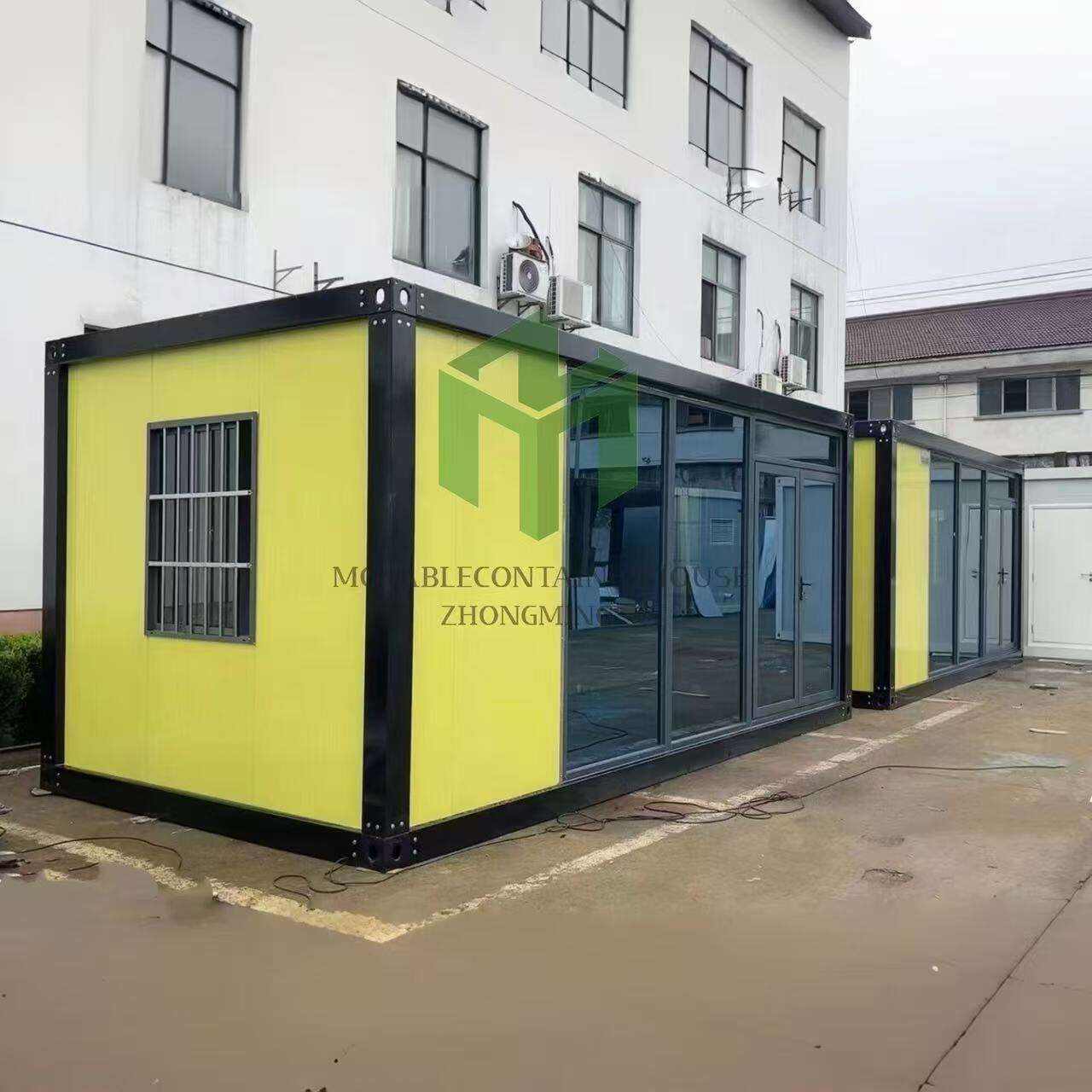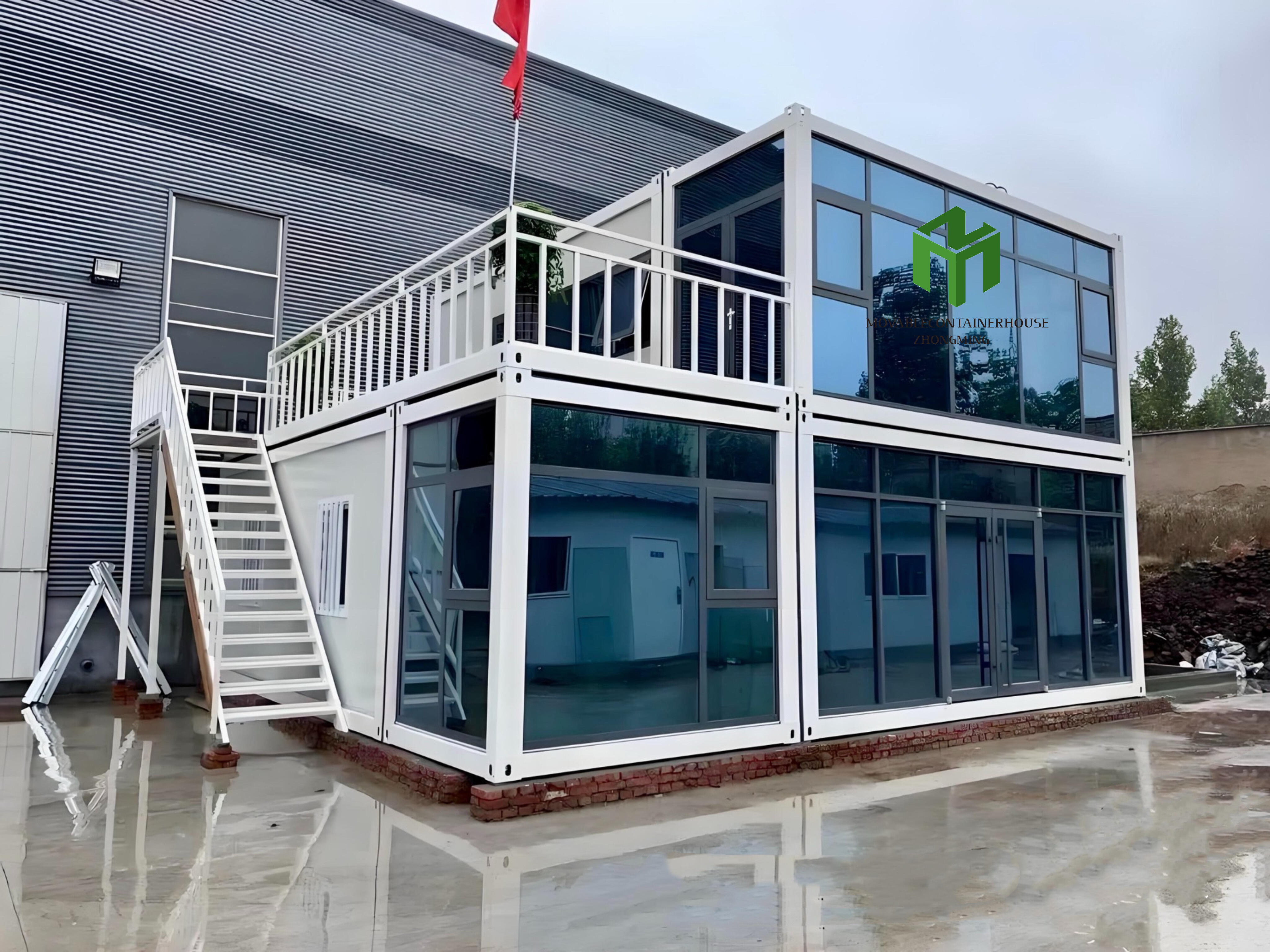The modern nomadic lifestyle has revolutionized how people approach travel, work, and living arrangements. A mobile container house represents the ultimate solution for adventurous individuals seeking freedom, sustainability, and comfort while exploring the world. These innovative structures combine the durability of shipping containers with the convenience of portable housing, creating unprecedented opportunities for location-independent living. Whether you're a digital nomad, an outdoor enthusiast, or someone seeking alternative housing solutions, understanding the transformative potential of container-based mobile homes can reshape your entire approach to travel and lifestyle design.
Revolutionary Design Features of Modern Container Housing
Structural Engineering Excellence
Container houses leverage the inherent strength of steel shipping containers, originally designed to withstand oceanic voyages and extreme weather conditions. The structural integrity of these units provides exceptional durability against wind, rain, and seismic activity. Modern engineering techniques have transformed basic containers into sophisticated living spaces through strategic modifications that maintain structural soundness while maximizing interior functionality. Advanced welding processes and reinforcement systems ensure that mobile container houses can handle the stresses of transportation and frequent relocation without compromising safety or comfort.
The modular nature of container construction allows for remarkable customization possibilities. Architects and designers can combine multiple units to create larger living spaces or configure single containers for maximum efficiency. Structural modifications include strategic window and door placements, skylight installations, and ventilation systems that transform industrial containers into livable spaces. The steel frame construction provides excellent load-bearing capacity, enabling the addition of rooftop decks, solar panel arrays, and external storage solutions without structural concerns.
Climate Control and Insulation Systems
Effective climate control represents a crucial aspect of container house livability, particularly for travelers encountering diverse weather conditions. Modern insulation techniques address the thermal bridging challenges inherent in steel construction through spray foam, rigid board, and reflective barrier systems. These multi-layer insulation approaches maintain comfortable interior temperatures while minimizing energy consumption. Advanced HVAC systems designed specifically for container spaces provide efficient heating, cooling, and air circulation throughout the compact living area.
Moisture management systems prevent condensation issues that can plague metal structures in humid environments. Vapor barriers, proper ventilation design, and humidity control mechanisms ensure healthy indoor air quality regardless of external conditions. Smart thermostats and zoning systems allow precise temperature control in different areas of the container, maximizing comfort while optimizing energy efficiency for off-grid living situations.
Mobility Advantages and Transportation Logistics
Highway Transportation Compatibility
The standardized dimensions of shipping containers ensure compatibility with existing transportation infrastructure worldwide. A mobile container house can be transported via standard semi-trailers, making relocation as simple as hiring a freight company. The 20-foot and 40-foot standard lengths fit within highway regulations in most countries, eliminating the permit requirements and escort services needed for oversized loads. This compatibility dramatically reduces transportation costs and scheduling complexity compared to traditional mobile homes or custom-built structures.
Loading and unloading procedures utilize standard container handling equipment available at ports, rail yards, and freight terminals globally. Twist-lock corner fittings and standardized lifting points enable crane operations and container handling systems to position units precisely without specialized equipment. The self-contained nature of container houses means that utilities and personal belongings can remain secured during transport, minimizing setup time at new locations.
International Shipping and Customs Considerations
For international travelers, container houses offer unique advantages in customs processing and documentation. The established shipping container classification system simplifies import and export procedures, as customs officials worldwide understand container specifications and handling requirements. Temporary import permits and carnet systems can facilitate extended international stays without permanent import duties. The standardized nature of containers also means that dimensional and weight specifications are universally recognized, streamlining border crossings and regulatory compliance.
Documentation requirements for container houses typically involve standard shipping manifests, ownership certificates, and temporary residence permits rather than complex mobile home registrations. Many countries have established procedures for temporary container placement, particularly for construction sites or emergency housing, which can be adapted for personal residential use. The industrial heritage of containers often results in more straightforward regulatory treatment compared to recreational vehicles or manufactured homes.

Sustainable Living and Environmental Impact
Recycling and Upcycling Benefits
Container house construction represents an excellent example of industrial upcycling, giving new life to shipping containers that have reached the end of their maritime service life. Millions of containers worldwide sit unused in port yards, creating environmental challenges and storage costs for shipping companies. Converting these containers into residential spaces prevents them from becoming scrap metal while providing affordable housing solutions. The embodied energy in steel container construction is substantial, making reuse significantly more environmentally responsible than recycling the steel for new products.
The conversion process typically requires minimal additional materials compared to traditional construction methods. Existing steel walls, floors, and structural elements remain largely intact, reducing the demand for new building materials. When modifications are necessary, the strong steel frame accommodates changes efficiently, often requiring less waste generation than conventional renovation projects. The longevity of properly maintained container structures extends their useful life significantly beyond their original shipping purpose.
Energy Efficiency and Off-Grid Capabilities
The compact size of container houses naturally promotes energy efficiency through reduced heating and cooling requirements. Smaller spaces require less energy to maintain comfortable temperatures, reducing overall environmental impact and utility costs. Strategic design choices, including window placement, insulation selection, and ventilation systems, can achieve remarkable energy performance in container homes. Solar panel systems are particularly well-suited to container houses, as the flat roof provides excellent mounting surfaces and the electrical requirements are manageable with renewable energy systems.
Water conservation systems integrate seamlessly into container house designs through rainwater collection, greywater recycling, and low-flow fixtures. The elevated positioning possible with container placement facilitates gravity-fed water systems and natural drainage solutions. Composting toilets and greywater treatment systems enable completely off-grid operation, making remote locations accessible for extended stays without environmental impact.
Cost Analysis and Financial Considerations
Initial Investment and Setup Costs
The initial cost of a mobile container house varies significantly based on size, features, and customization level. Basic converted containers start at relatively modest price points compared to traditional mobile homes or recreational vehicles of similar size. However, comprehensive conversions with high-end finishes, appliances, and systems can approach the cost of conventional housing. The key advantage lies in the predictable pricing structure and the ability to phase improvements over time as budget allows.
Setup costs at new locations are typically minimal compared to traditional housing arrangements. The self-contained nature of container houses eliminates foundation requirements, reducing site preparation to leveling and utility connections. Many locations can accommodate container placement with minimal site work, and the mobility factor means that expensive permanent infrastructure investments are unnecessary. Temporary utility connections and portable services can provide full functionality while maintaining the ability to relocate quickly.
Long-term Value and Appreciation Potential
Unlike traditional recreational vehicles that depreciate rapidly, well-built container houses can maintain or increase their value over time. The durability of steel construction and the growing acceptance of alternative housing contribute to stable resale values. Improvements and modifications typically add value to the structure, similar to traditional real estate investments. The increasing interest in sustainable living and minimalist lifestyles has created a growing market for quality container homes.
Operating costs for container houses are generally lower than traditional housing due to smaller space requirements and energy-efficient systems. Reduced utility bills, minimal maintenance requirements, and the elimination of property taxes in many jurisdictions create significant long-term savings. The ability to relocate based on cost of living differences or seasonal preferences provides additional financial flexibility unavailable to traditional homeowners.
Practical Applications for Different Lifestyles
Digital Nomad and Remote Work Solutions
The rise of remote work has created unprecedented demand for flexible living solutions that accommodate professional requirements while enabling location independence. Container houses provide ideal environments for digital nomads, offering dedicated workspace areas, reliable internet connectivity options, and the quiet environment necessary for video conferences and focused work. The ability to relocate based on seasonal preferences, cost considerations, or visa requirements makes container living particularly attractive for international remote workers.
Technology integration in modern container houses supports professional requirements through dedicated office spaces, multiple internet connection options, and adequate electrical capacity for computer equipment. Satellite internet systems and cellular boosters enable connectivity in remote locations where traditional broadband is unavailable. The controlled environment protects sensitive equipment from weather and theft while providing ergonomic workspaces designed for extended computer use.
Adventure Travel and Outdoor Recreation
Outdoor enthusiasts find container houses perfectly suited to adventure travel, providing secure base camps for extended expeditions into remote areas. The durability and weather resistance of container construction withstands harsh conditions that would damage traditional recreational vehicles. Storage solutions for outdoor gear, equipment washing areas, and secure lockup capabilities support active lifestyles while maintaining comfort during rest periods.
The mobility of container houses enables access to prime outdoor recreation areas without the compromises typically associated with temporary camping arrangements. Seasonal relocation between climbing areas, ski resorts, or coastal regions becomes practical when your home can move with you. The self-sufficiency possible with off-grid systems means that remote locations without infrastructure can provide extended stay opportunities.
FAQ
How long does it take to set up a mobile container house at a new location
Setting up a mobile container house typically requires one to three days depending on site conditions and utility requirements. The actual placement by crane or specialized trailer takes only a few hours, but leveling the site, connecting utilities, and performing interior setup can extend the process. Sites with existing utility connections and level ground enable same-day occupancy, while remote locations requiring utility installation or significant site preparation may need several days. The self-contained nature of container houses means that basic living functions are available immediately upon placement, with full utility connections completing the setup process.
What permits and regulations apply to mobile container houses
Permit requirements for mobile container houses vary significantly by location and intended use duration. Temporary placements often fall under camping or temporary structure regulations rather than permanent housing codes, simplifying the approval process. Many jurisdictions classify container houses as manufactured homes or recreational vehicles, requiring specific certifications and compliance with mobile home regulations. Long-term placements typically require building permits, septic system approvals, and compliance with local zoning ordinances. Consulting with local building departments before placement helps identify specific requirements and avoid regulatory complications.
How do mobile container houses perform in extreme weather conditions
Properly constructed mobile container houses excel in extreme weather due to their steel construction and aerodynamic profile. The structural strength of shipping containers enables them to withstand hurricane-force winds, heavy snow loads, and seismic activity better than many traditional structures. Proper anchoring systems and foundation design are crucial for wind resistance, while insulation and climate control systems maintain interior comfort in temperature extremes. The sealed steel construction provides excellent protection from rain, snow, and humidity when properly weatherproofed and ventilated.
What maintenance requirements do mobile container houses have
Maintenance requirements for mobile container houses focus primarily on protecting the steel structure from corrosion and maintaining mechanical systems. Regular inspection and treatment of any rust spots prevents structural deterioration, while exterior paint or protective coatings provide long-term corrosion resistance. HVAC systems, plumbing, and electrical components require standard maintenance similar to conventional homes but may need more frequent attention due to the compact installation. The mobility factor requires periodic inspection of transportation mounting points and ensuring that all systems are properly secured for movement. Overall maintenance requirements are typically lower than traditional housing due to the durable construction and simplified systems.


